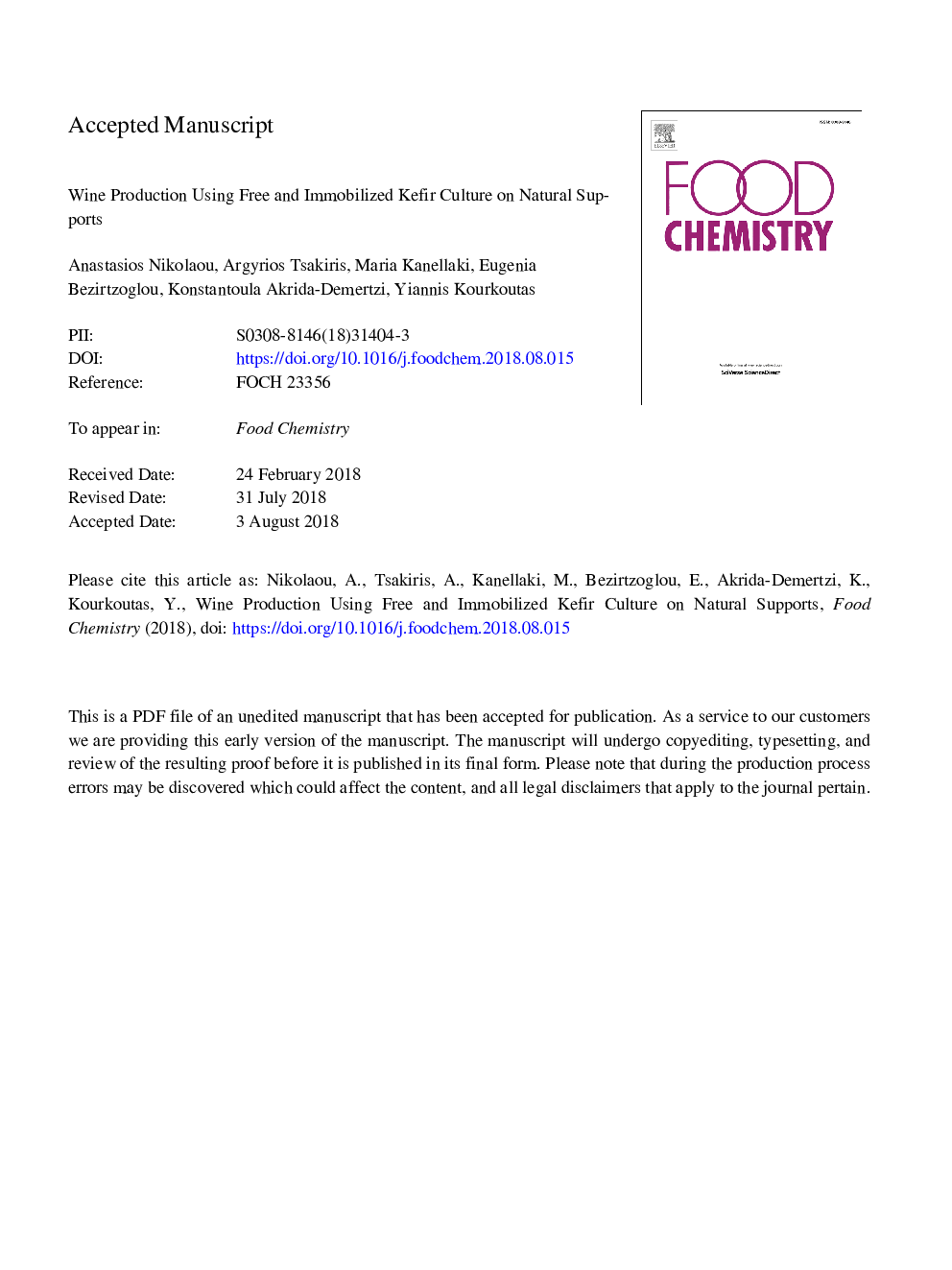| Article ID | Journal | Published Year | Pages | File Type |
|---|---|---|---|---|
| 7583706 | Food Chemistry | 2019 | 39 Pages |
Abstract
The aim of the present study was to perform simultaneous alcoholic and malolactic wine fermentations using free or immobilized kefir culture at a wide temperature range (5-45â¯Â°C). Repeated batch fermentations were carried out for a period up to 29â¯months, suggesting a high operational stability of the systems, while malic acid conversion and ethanol productivity up to 70.9% and 36.9â¯g/(Ld) were noted. Volatile acidity was at levels typically found in wines (<1.0â¯gâ¯acetic acid/L) in most cases, although increased values were recorded in wines produced at 5â¯Â°C, but no vinegar taint was detected. Fusel alcohols were at levels usually found in wines, but were reduced at 5â¯Â°C. Application of PCA to minor volatiles showed that the fermentation temperature rather than the nature of kefir culture had a significant effect. Noticeably, all products were accepted by the panel during the preliminary sensory evaluation.
Keywords
1-hexanol (PubChem CID: 8103)2-Phenylethanol (PubChem CID: 6054)Delignified cellulosic materialEthanol (PubChem CID: 702)Ethyl acetate (PubChem CID: 8857)Sensory evaluationacetaldehyde (Pubchem CID: 177)Acetic acid (PubChem CID: 176)Lactic acid (PubChem CID: 612)AppleWineVolatilesMethanol (PubChem CID: 887)Grape skins
Related Topics
Physical Sciences and Engineering
Chemistry
Analytical Chemistry
Authors
Anastasios Nikolaou, Argyrios Tsakiris, Maria Kanellaki, Eugenia Bezirtzoglou, Konstantoula Akrida-Demertzi, Yiannis Kourkoutas,
